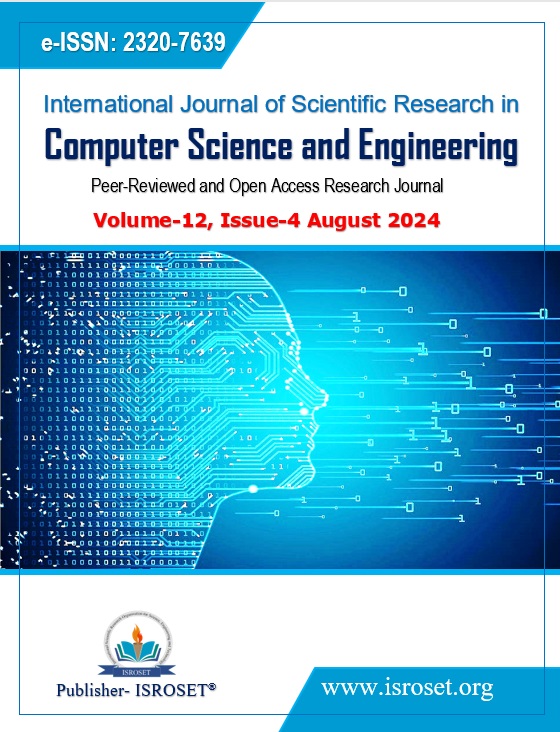Cyber-Physical Systems with Anti-smog Guns for Busy City Areas to Suppress Air Pollution Efficiently
Keywords:
Cyber-Physical System, Air Pollution Suppression, Transdisciplinary approach, Anti-smog guns, Air Scrubber, Nephelometer, IoT, Cloud computingAbstract
Living in once the world’s most polluted city i.e. Kathmandu, it is obvious to question ourselves what adverse effect we could have by just inhalation of the toxic air every day, especially, when inhaling the air for a single day equals the fumes produced by nearly 10 cigarettes. Meanwhile, the long-term plans–planting trees, strict traffic regulations, and awareness–seemed to be implausible for the locals and city hustles. Similarly, instant solutions like Anti-smog vehicles invite more problems like traffic congestion and management efforts, and solutions like air scrubber technology are yet to be implemented that require prior data of polluted areas to place the scrubber efficiently. Therefore, a concept to tackle these issues, a system that automatically implements instant solutions to suppress air pollution for adverse effects, is to be introduced. This paper explores the concept of Technology, IoT, Data Science, and Cloud computing concepts to build a Cyber-Physical System and uses water mist with suitable eco-friendly surfactants to suppress air pollution in busy city areas efficiently. Our proposed solution uses a chain of Nephelometers throughout the city at specific distances that send data to the cloud that is further processed to operate the nearby automatic immobile Anti-smog gun to suppress the particulate matter without any traffic congestion or mass wastage of resources. The collected data collected in the cloud could be further evaluated to place additional Air Scrubber Systems in specific required areas.
References
World Health Organization. “Air Pollution and Child Health: Prescribing Clean Air,” WHO, 2018. Accessed: July 12, 2024.
S. Zheng, J. Cao, & Y. Song, “Urban Air Quality and Health: Empirical Evidence from China,” China Economic Review, Vol. 30, pp. 514-528, 2014.
P. Kumar, & S. Gulia, “Tackling Air Pollution in Urban Areas: Some Case Studies,” Aerosol and Air Quality Research, Vol. 17, Issue. 4, pp. 1072-1084, 2017.
S. Roy, & P. Goswami, “The Role of Urban Planning in Air Pollution Reduction: Evidence from India,” Environment, Development and Sustainability, Vol. 22, pp. 1337-1354, 2020.
L. Tang, & J. Lang, “Evaluating the Effectiveness of Urban Green Spaces for Mitigating Air Pollution: A Review,” Urban Forestry & Urban Greening, Vol. 31, pp. 192-204, 2018.
R. Singh, & V. Sinha, “Air Pollution in Mega Cities: An Overview of Human Health Effects and the Role of Non-Governmental Organizations,” International Journal of Environmental Research and Public Health, Vol. 16, No. 22, pp. 4265, 2019.
H. Chen, & H. Kan, “Air Pollution and Health Effects in China: A Review of Current Evidence,” Journal of Environmental Sciences, Vol. 94, pp. 103-115, 2020.
C. He, & L. Morawska, “Characterization of Emissions from Diesel Vehicles Equipped with Different Types of Particulate Control Technologies,” Atmospheric Environment, Vol. 221, Article 117065, 2019.
S. Joshi, & P. Mishra, “Monitoring Urban Air Pollution Using Low-Cost Sensors: Case Study of Kathmandu Valley,” Environmental Monitoring and Assessment, Vol. 194, Issue. 2, Article 103, 2022.
S. Ryu, & S. Chung, “Smart Water Management for Sustainable Urban Development,” Water Resources Management, Vol. 32, pp. 3331-3345, 2018.
J. Gao, & S. Li, “Real-Time Air Quality Monitoring and Forecasting System for Urban Areas Using CPS Technology,” Journal of Cleaner Production, Vol. 209, pp. 865-876, 2019.
X. Zhang, & Y. Wang, “Optimizing Locations of Air Scrubbers in Urban Environments Using GIS and Remote Sensing,” Environmental Pollution, Vol. 223, pp. 79-87, 2017.
C. Chen, B. Zhao, L. B. Weschler, & H. Wang, “Indoor Air Quality and Thermal Comfort in Residential Buildings,” Energy and Buildings, Vol. 103, pp. 115-124, 2015.
S. Gulia, M. Khare, & I. Khanna, “Assessment of Effectiveness of Air Quality Interventions During the 2010 Commonwealth Games at Delhi, India,” Environmental Science and Pollution Research, Vol. 22, No. 17, pp. 13279-13288, 2015.
P. Gupta, S. A. Christopher, J. Wang, R. Gehrig, Y. C. Lee, & N. Kumar, “Satellite Remote Sensing of Particulate Matter and Air Quality Assessment Over Global Cities,” Atmospheric Environment, Vol. 40, No. 30, pp. 5880-5892, 2018.
P. Kumar, A. P. Patton, J. L. Durant, & H. C. Frey, “A Review of Factors Impacting Exposure to PM2.5, Ultrafine Particles, and Black Carbon in Asian Transport Microenvironments,” Atmospheric Environment, Vol. 178, pp. 79-93, 2020.
E. G. McPherson, D. J. Nowak, & R. A. Rowntree, “Chicago`s Urban Forest Ecosystem: Results of the Chicago Urban Forest Climate Project,” USDA Forest Service General Technical Report, NE-186, 1997.
D. J. Nowak, D. E. Crane, & J. C. Stevens, “Air Pollution Removal by Urban Trees and Shrubs in the United States,” Urban Forestry & Urban Greening, Vol. 4, Nos. 3-4, pp. 115-123, 2006.
P. Zhao, H. Yu, Y. Yin, & D. He, “Performance of Outdoor Air Cleaners: A Review,” Building and Environment, Vol. 137, pp. 132-145, 2018.
S. Mewada, U. K. Singh, and P. Sharma, "Title of the Paper," International Journal of Scientific Research in Computer Science and Engineering, Vol. 1, Issue. 1, 2013.
V. Mangotra and R. Dogra, "Cloud reliability enhancement mechanisms: A Survey," International Journal of Scientific Research in Computer Science and Engineering, Vol. 6, Issue. 3, pp. 31-34, 2018.
Partnership For Advanced Computing in Europe. AmpliSIM: Air Quality Simulation for Industry. Accessed: July 28, 2024.
Downloads
Published
How to Cite
Issue
Section
License

This work is licensed under a Creative Commons Attribution 4.0 International License.
Authors contributing to this journal agree to publish their articles under the Creative Commons Attribution 4.0 International License, allowing third parties to share their work (copy, distribute, transmit) and to adapt it, under the condition that the authors are given credit and that in the event of reuse or distribution, the terms of this license are made clear.







